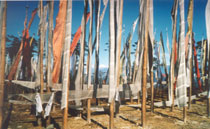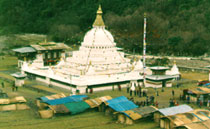Eastern Bhutan


Introduction
Eastern Bhutan is a densely populated region and remains the kingdom's hinterland. The dominant language here is Sharchop. The Manas river system, Bhutan's largest river and a major tributary of the Bhramaputra's, drains most of the eastern Bhutan. It is at much lower altitude than Central and Western Bhutan. The warmer climate is suitable for growing corn, rice, wheat, potatoes and surprisingly lemon grass. It is known for its stunning hand-loomed textiles and the weavers are all masters of the supplementary weft-weave technique. Eastern Bhutan is the least travelled area of the country and is where many of the kingdom's most ancient spiritual sights are found.
History
The most important figures in this region's history was Chhogyel Mingyur Tenpa. When he was governor of Trongsa he led his armies to eastern Bhutan to quell revolts in Bumthang, Luentse, Trashigang, Mongar and Zhemgang. His efforts were responsible for bringing eastern Bhutan under the rule of secular ruler of Bhutan and went a long way towards the ul-Tenpa built the Trongsa Dzong and was responsible for the construction of most of the districts in eastern as well as central Bhutan.
Attractions
Destinations
Wildlife Sanctuaries

